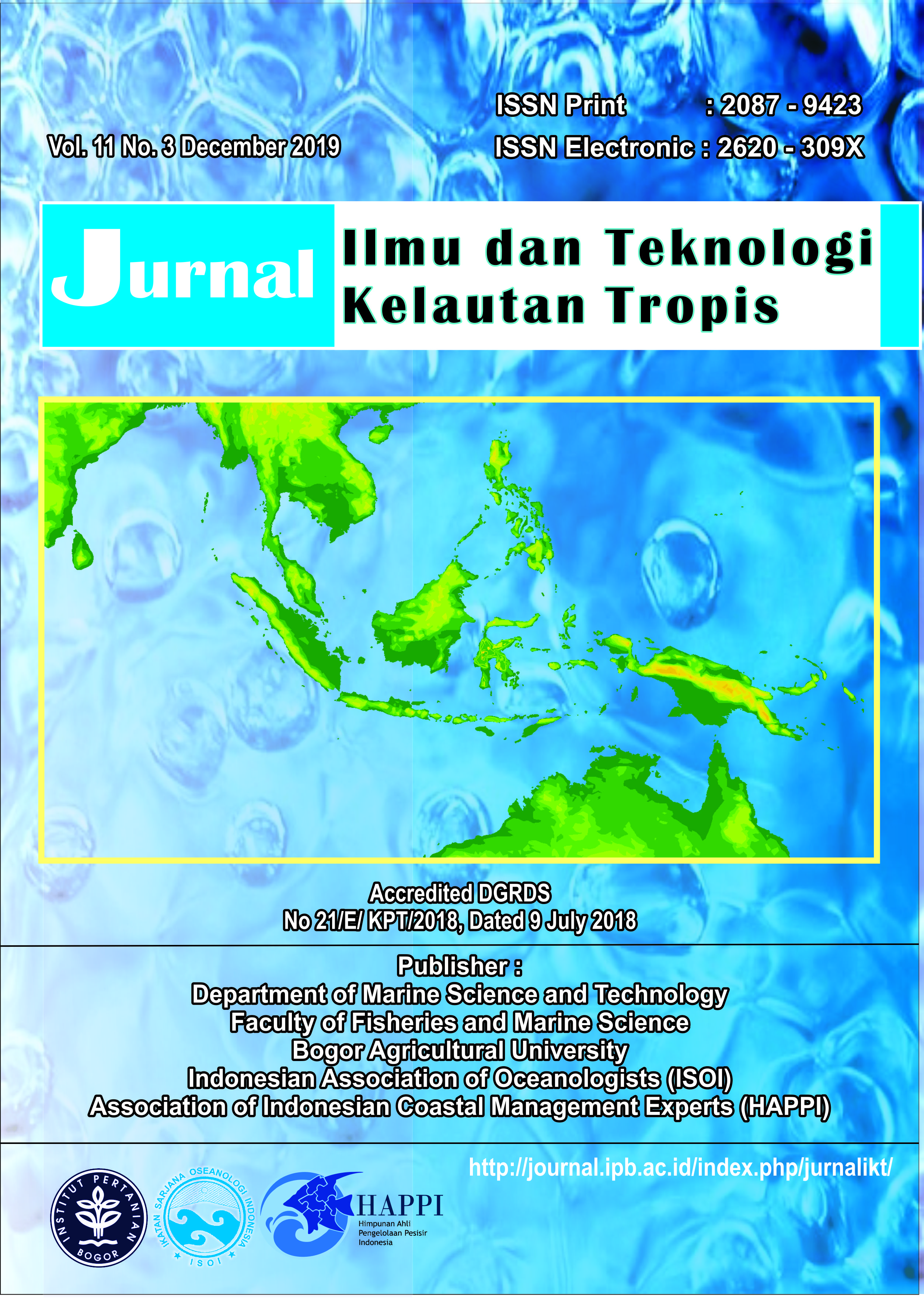COMMUNITY STRUCTURE OF MOLLUSCS AT SEAGRASS BEDS IN BELITUNG ISLAND WATERS, BANGKA BELITUNG PROVINCE
Abstract
The Belitung Island consists of small islands with seagrass area, which inhabited by species of mollusks but the diversity of in mollusk in these waters no yet widely known. Observations in Kelayang Island (BLTS01 station), Kepayang Island (BLTS02 station), Mendanau Island (BLTS03 station), Sekutai Island (BLTS04 station), Sebongkok Island (BLTS05 station), Ruk Island (BLTS06 station) and Kalimambang Island (BLTS07 station) was conducted on 29 August to 9 September 2018 to find out community structure and mollusks density. The method used was quadrant transect, starting from the edge of the beach perpendicular to the coast. From the results of the study, it was found 22 species of mollusk consisting of 10 species of bivalves class and 12 species of gastropods class. Anadara antiquata, Pinna bicolor and Gafrarium pectinatum from the bivalves class, and Lambis lambis and Strombus urceus from the gastropods class were having a relatively wide distribution. The highest mollusk density was found in station BLTS06 (23.283 individu/ha) and the lowest was in Station BLTS03 (283 individu/ha), respectively Isognomon isognomum was a species that dominated the sand substrate in BLTS06. The value of species diversity index (H') ranged from 2.42 to 3.52. This value indicated the diversity of mollusk species was of moderate condition. Evenness index (J') ranged from 0.71 to 0.86. From the results of this study, it can be concluded that the mollusk community in these waters is still in reasonably good condition.
Authors
This work is licensed under a Creative Commons Attribution 4.0 International License.
Jurnal Ilmu dan Teknologi Kelautan Tropis i is an open-access journal, meaning that all content is freely available without charge to the user or their institution. Users are allowed to read, download, copy, distribute, print, search, or link to the full texts of the articles in this journal without needing to request prior permission from the publisher or the author.
All articles published by Jurnal Ilmu dan Teknologi Kelautan Tropis are licensed under the Creative Commons Attribution 4.0 International License. This allows for unrestricted use, distribution, and reproduction in any medium, provided proper credit is given to the original authors.
Authors submitting manuscripts should understand and agree that the copyright of published manuscripts is retained by the authors. Copyright encompasses the exclusive rights of authors to reproduce, distribute, and sell any part of the journal articles in all forms and media. Reproduction of any part of this journal, its storage in databases, and its transmission by any form or media is allowed without written permission from Jurnal Ilmu dan Teknologi Kelautan Tropis.


